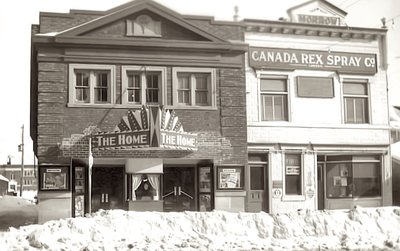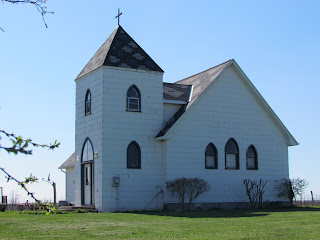 |
| Morrow's Storage ramp and freight shed at MJM |
A bit of Brighton history which might be easily overlooked, as a visitor crosses the threshold of the Interpretation Centre and gets overwhelmed by the amazing collection of area history, is the Morrow's Storage sign, impressed into the cement of the ramp leading to the car doors. This steel-clad building was once the freight shed for the J.H.Morrow Ford automobile distributorship.
 In 1910, James Morrow travelled to Detroit (as Ralph Bangay of Memory Junction Museum recounts it) to obtain distribution rights for the new-fangled Ford motor car. He managed the deal, and became distributor for the autos from Oshawa to Gananoque.
In 1910, James Morrow travelled to Detroit (as Ralph Bangay of Memory Junction Museum recounts it) to obtain distribution rights for the new-fangled Ford motor car. He managed the deal, and became distributor for the autos from Oshawa to Gananoque. The Fords arrived by train (an irony that can only be appreciated with the end of passenger rail service there in 1965) and were off-loaded into the building along the dedicated siding. Somewhere I have seen photos of crowds throngs of people meeting the train, climbing up on the freight cars, streaming around a horse and carriage caught up in the crowd.
The Fords arrived by train (an irony that can only be appreciated with the end of passenger rail service there in 1965) and were off-loaded into the building along the dedicated siding. Somewhere I have seen photos of crowds throngs of people meeting the train, climbing up on the freight cars, streaming around a horse and carriage caught up in the crowd.Across the road stood a massive cold storage warehouse and grain elevator; it too had rails leading to the loading dock. Lots happened by rail then.

I have been fond of this steel-clad building with the blue boom-town front since I first visited Brighton. Just recently, I saw an historic photo showing it when it housed Morrow's Ford dealership.
Ralph Bangay recounts climbing out onto the front to replace one of the cylindrical finial adornments.

 |
| thanks to Brighton Digital Archives |

Next door to it, in 1922, the Bank of Commerce opened in their new quarters, which had become the Home Theatre by the time the above photo was taken (from the Susan Brose collection at the Brighton Digital Archives.) As you can see, the Morrow building had changed hands as well, becoming home to the Canada Rex Spray Company. We farm kids likely remember Fly-Tox, one of their products.

Unfortunately, both buildings with all their history are under threat, as a new gas station convenience store is planned for the property.
Soon there will be no Morrow building.






